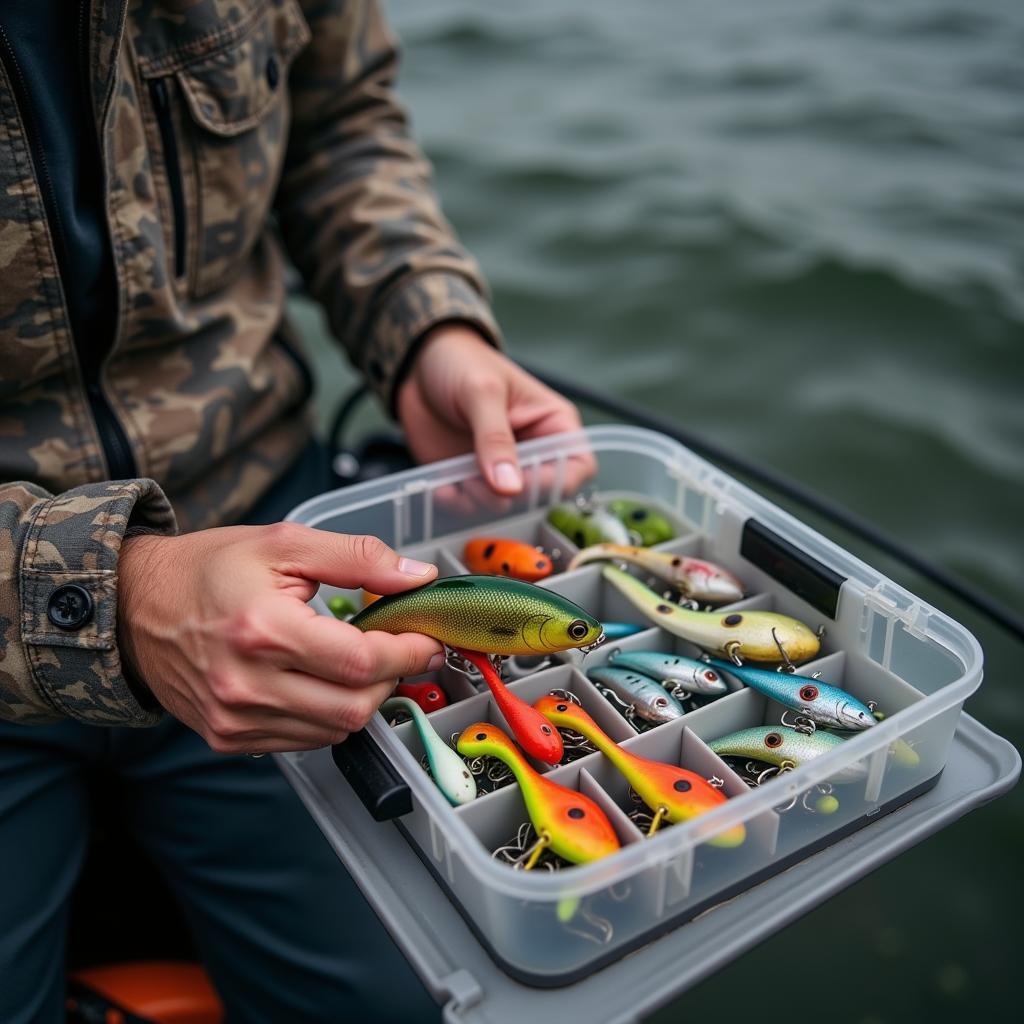Walleye are known for their exceptional vision, especially in low-light conditions. This ability is crucial for their predatory success, allowing them to hunt effectively in murky waters and during dawn and dusk. But have you ever wondered what colors walleye see best and how this knowledge can improve your fishing game?
Deciphering the Walleye’s Visual Spectrum
Walleye, unlike humans, possess a unique visual system that allows them to perceive a broader spectrum of light. While we primarily see within the visible light range, walleye can also detect ultraviolet (UV) light. This ability gives them a significant advantage in their underwater world, where light conditions can vary greatly.
Colors That Command Attention: Unveiling Walleye’s Preferences
Research suggests that walleye are particularly sensitive to colors within the green, yellow, and orange spectrum. These colors appear brighter and more vibrant underwater, making them easily noticeable even in low visibility. Let’s explore why these colors stand out:
-
Green: Being the dominant color in their natural environment, green blends seamlessly with underwater vegetation and provides camouflage for prey fish. This familiarity makes anything that disrupts the green monotony, like your lure, instantly stand out.
-
Yellow and Chartreuse: These colors possess high visibility underwater, especially in murky or stained water conditions. They create a strong contrast against the blue and green backdrop, attracting a walleye’s attention from afar.
-
Orange: Orange offers excellent contrast, especially in clear water. It mimics the natural coloration of many prey fish, triggering a walleye’s feeding instincts.
Beyond Color: Factors Influencing Walleye Vision
While color plays a crucial role in attracting walleye, other factors contribute to their visual perception:
-
Water Clarity: The clarity of the water significantly impacts how colors appear underwater. In clear water, brighter colors like orange and chartreuse are highly visible, while in murky water, darker colors like purple and black offer better contrast.
-
Light Conditions: Walleye are most active during low-light periods like dawn and dusk. During these times, fluorescent colors tend to stand out. In bright sunlight, natural baitfish patterns and colors might prove more effective.
-
Depth: As light penetration decreases with depth, color perception changes. Lighter colors lose their vibrancy faster than darker ones. Therefore, consider using darker lures when fishing deeper waters.
-
Movement and Vibration: Walleye rely heavily on their lateral line, a sensory system that detects movement and vibrations in the water. A lure’s action and the vibrations it produces often play a more significant role in attracting walleye than color alone.
Expert Insights: Tips for Choosing the Right Lure Color
“Understanding the interplay between color, water conditions, and light levels is key to selecting the most effective lure,” says renowned angler and walleye fishing guide, Captain Mark Wilson. “Experiment with different color combinations and pay close attention to what works best in your local waters.”
 Angler choosing fishing lures
Angler choosing fishing lures
Conclusion
Walleye vision, with its sensitivity to a wider light spectrum and preference for specific colors, plays a crucial role in their feeding habits. By understanding these factors and adapting your lure selection accordingly, you can significantly increase your chances of a successful walleye fishing trip. Remember to consider water clarity, light conditions, and depth when choosing your lures, and don’t be afraid to experiment to discover what works best in your local waters.